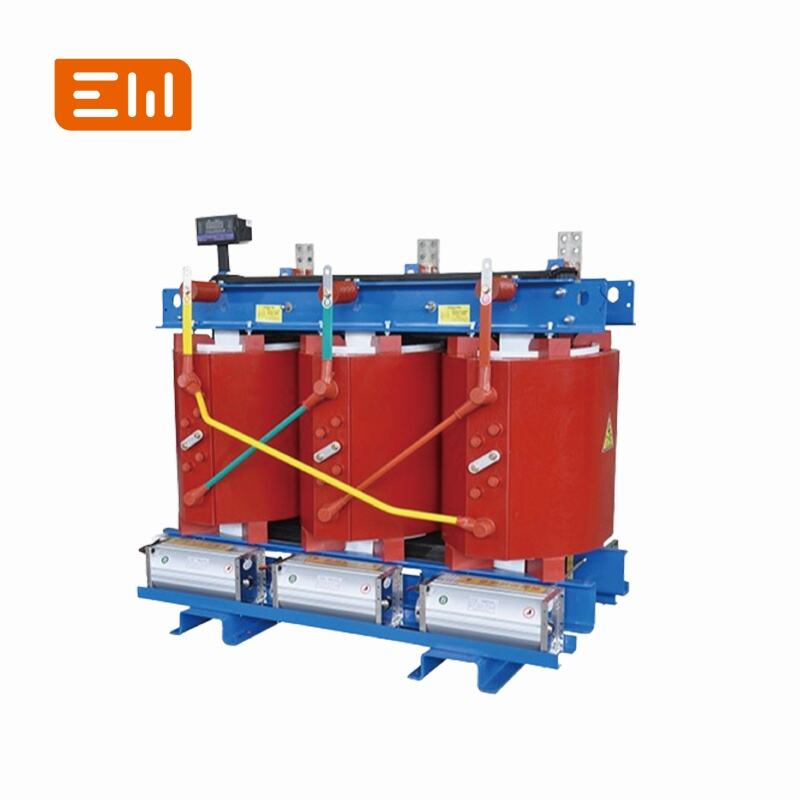Dry Type Transformer Specifications Explained: A Complete Technical Guide
Selecting the right dry type transformer requires more than just knowing you need one; it demands a clear understanding of its technical specifications. These parameters define the transformer's performance, capacity, and suitability for your specific application. This guide will demystify the key specifications found on a transformer's nameplate and technical datasheets, empowering you to make a precise and informed decision.
Understanding the Core Specifications
1. Power Rating (kVA or MVA)
The power rating, measured in kilovolt-amperes (kVA) or megavolt-amperes (MVA), is the most fundamental specification. It indicates the maximum apparent power the transformer can deliver continuously without exceeding its temperature limits. To choose the right kVA, you must calculate the total load of all devices the transformer will power, and it's wise to add a 20-25% buffer for future expansion.
Enwei Electric offers a broad range of https://www.enweielectric.com/products/transformers/dry-type-transformers">dry type transformers from 30 kVA up to 31,500 kVA (31.5 MVA) to match any load requirement.
2. Voltage Rating (Primary and Secondary)
This specifies the voltages the transformer is designed to operate at.
- Primary Voltage: The input voltage that the transformer will receive from the power source.
- Secondary Voltage: The output voltage that the transformer will deliver to the load.
- Taps: These are adjustable points on the windings that allow for small changes in the turns ratio. They are used to compensate for fixed voltage variations in the primary supply to maintain a stable secondary voltage. For example, a transformer might have taps at +2.5%, +5%, -2.5%, and -5% of the nominal voltage.
3. Phase (Single-Phase vs. Three-Phase)
This defines the type of electrical system the transformer is built for.
- Three-Phase: The standard for power distribution and industrial applications, used to power motors and large loads. Most of our models, like the https://www.enweielectric.com/products/transformers/dry-type-transformers/scb10-three-phase-dry-type-transformer">SCB10 and https://www.enweielectric.com/products/transformers/dry-type-transformers/scbh15-three-phase-dry-type-transformer">SCBH15, are three-phase.
- Single-Phase: Used for smaller loads, typically in residential or light commercial applications. Our https://www.enweielectric.com/products/transformers/dry-type-transformers/dc-single-phase-dry-type-transformer">DC series caters to these needs.
4. Percent Impedance (%Z)
Impedance, expressed as a percentage, is a measure of the transformer's opposition to current flow. It is crucial for:
- Fault Current Calculation: A lower impedance allows a higher short-circuit current to flow, while a higher impedance limits it. This value is essential for selecting correctly rated protective devices like circuit breakers.
- Voltage Regulation: It affects the voltage drop across the transformer as the load increases.
- Parallel Operation: Transformers must have similar impedances (typically within ±7.5%) to be operated in parallel and share the load correctly.
5. Insulation Class and Temperature Rise
This is a critical specification for a dry type transformer's durability. The insulation class defines the maximum temperature the insulation system can withstand continuously. Common classes include:
- Class F: Maximum winding temperature of 155°C.
- Class H: Maximum winding temperature of 180°C.
Temperature Rise is the maximum temperature increase the windings can experience above a standard ambient temperature (usually 40°C) while operating at full load. For example, a Class F transformer might have a temperature rise of 80°C or 115°C, which is well within its 155°C limit.
6. Cooling Method (AN / AF)
This indicates how the transformer dissipates heat.
- AN (Air Natural): The transformer cools via natural air convection around the windings and core. This is the base kVA rating.
- AF (Air Forced): The transformer is equipped with fans that force air across the windings for additional cooling. This allows the transformer to handle a higher load, providing an increased kVA rating (often 25-50% higher than the AN rating).
7. Efficiency and Losses
Transformer efficiency is determined by its losses.
- No-Load Losses (Core Losses): The energy consumed to magnetize the core. These losses are constant whenever the transformer is energized, regardless of the load. Models with amorphous alloy cores, like our SCBH15 series, offer exceptionally low no-load losses.
- Load Losses (Winding Losses): The heat generated in the windings due to the load current (I²R losses). These losses increase with the square of the load.
Higher efficiency transformers have lower overall losses, resulting in significant energy savings over the transformer's life.
8. Ingress Protection (IP) Rating
The IP rating defines the degree of protection the transformer's enclosure provides against the ingress of solid objects (like dust and fingers) and liquids (like water). For example, an IP21 rating means it is protected against solid objects larger than 12.5mm and dripping water. The required IP rating depends entirely on the installation environment.
Conclusion: From Specifications to Solution
Understanding these key specifications is the first step toward selecting a transformer that is not only functional but also safe, efficient, and reliable for years to come. Each parameter plays a vital role in the transformer's performance and its interaction with your electrical system.
While this guide provides a solid foundation, choosing the perfect transformer often involves nuanced details. The technical experts at Enwei Electric are here to help you navigate these specifications and configure the ideal solution for your project.
Have your specifications ready or need help defining them?
- https://www.enweielectric.com/contact-us">Contact us today for a technical consultation or a detailed quote.
- https://www.enweielectric.com/products/transformers/dry-type-transformers">Browse our portfolio of customizable Dry Type Transformers.

